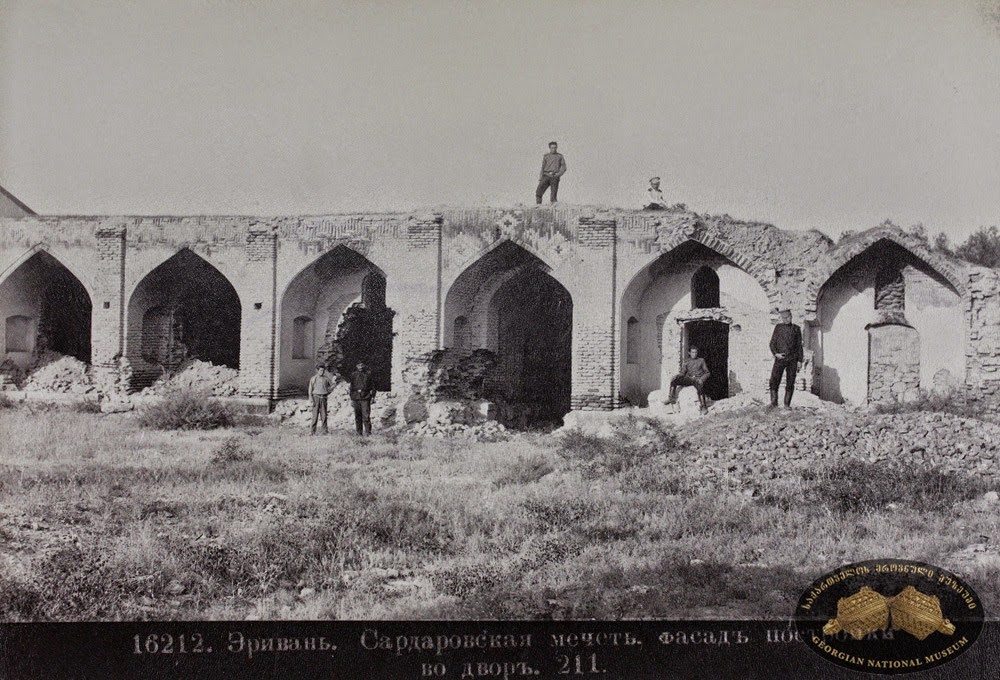Armenians, who have been occupying Azerbaijani lands for almost three decades and who have carried out ethnic cleansing of the Azerbaijani population of the areas, have also tried to expropriate the cultural heritage of Azerbaijan, Azerbaijan In Focus reports. Armenians have historically been known to have a tendency to appropriate Azerbaijani cuisine and dishes and portray them as Armenian, continuing this fraud to this day.
The Azerbaijan National Culinary Center (ANCC) is at the forefront of Azerbaijan’s fight against Armenian appropriation tendencies, carrying out very important activity at international culinary events, researching the history of cuisine and publishing books on Azerbaijani national cuisine to expose Armenian falsifications. The book “Regional Cuisine of the Irevan Khanate”, published in Istanbul, is a logical continuation of the success of the ANCC, headed by Tahir Amiraslanov, in disseminating the realities of Azerbaijan in the international arena.
The “Regional Cuisine of the Irevan Khanate”, the product of many years of research, is dedicated to the issue, which, today, is both historically and ethnographically, of great interest as it covers the ancient culinary culture of the Azerbaijanis of Irevan khanate, who were local residents of the territory now called “Armenia”. The book contains numerous historical and ethnographic facts that belong to the cuisine of the western Azerbaijanis and show the richness of the material culture created by the people of this region. This publication, which is based on historical facts and ethnographic research, proves the groundlessness of Armenian claims, is a valuable encyclopedic source on the material and spiritual culture of the ancient Irevan region of Azerbaijanis.
The research sheds light on the “Armenian Cuisine” book published by the Academy of Sciences of the Armenian SSR back in 1960, where Armenian “experts” falsified the names of food products and dishes and their cooking methods collected from Azerbaijani villages and settlements in Goycha and Zangazur districts in order to “restore Armenian cuisine”.

However, as you turn the pages of the book “Regional Cuisine of the Irevan Khanate”, it becomes clear that despite the efforts of the Armenians to appropriate the food and drinks in cuisine of the Azerbaijani people of the Irevan Khanate and to portray them as “Armenian dishes”, the names of most of the dishes, food products, fruits and vegetables, spices (boranı, arishta-(əriştə), khashil, kufta, dolma, govurma, bozartma, kata, lavash, penir, goguplov-(gögüplov), odplov, muammarplov-(müəmmərplov), imam bayıldı, etc.) nevertheless are in Azerbaijani.
Armenians aimed to create a fake “culinary culture” by making some literal changes to the names of food and drink in the terminology of Azerbaijani culinary. The international community is already seeing Armenian fakes geeting exposed and removed. Despite Armenian claims, in 2016, the UNESCO Intergovernmental Committee for the Safeguarding of the Intangible Cultural Heritage included “lavash” in the UNESCO Representative List of the Intangible Cultural Heritage as the bread of the Turkic people. And since 2017, “dolma”, as an item of Azerbaijani cuisine has been part of the honour list of UNESCO’s Intangible Cultural Heritage.

One of the assets of the book “Regional Cuisine of the Irevan Khanate” is the inclusion of historical photos reflecting the cultural heritage of the Irevan Khanate, Azerbaijani and Islamic religious culture, showing the process of destruction of Sardar Palace, Irevan mosques, caravanserai and other medieval architectural sites. Historical documents presented by the National Museum of Georgia and Georgian scientists, photographs taken by Russian orientalist-photographer Yermakov (1845-1916), archive evidence regarding the restoration of Sardar Palace endorsed by Tsar Nicholas II are undeniable facts that the Irevan Khanate was an ancient territory inhabited by Azerbaijanis.




The book lists many food products of Irevan cuisine, a wide range of kitchen utensils, 413 types of food and drinks and the methods of their preparation, which gives a clear idea of the cuisine and table culture created by Azerbaijanis in the historical territory of the Irevan Khanate now called “Armenia”. The “Regional Cuisine of the Irevan Khanate” takes every Azerbaijani on a spiritual tour to his native land and reminds them once again of its beauty, the aroma of tandoor and the taste of its dishes.
As the publication of the book “Regional Cuisine of the Irevan Khanate” coincided with the COVID-19 pandemic, its presentation had been held online through the “E-Academy” project of the State Committee for Work with the Diaspora. The merits of the book and its promotion in the international arena were discussed at the video conference with the participation of representatives of the Azerbaijani Diaspora and international organizations. Information about the publication of the book had been released in the Turkish and French media and it is currently on display in the Alfred Nobels museum (Alfred Nobels Bjorkborn in Karlskoga, Sweden). The planned presentation of the book “Regional Cuisine of the Irevan Khanate” in European countries has been resceduled and will take place after the post-pandemic period.















